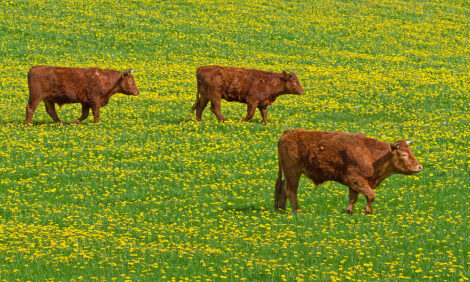



Trending Possible Weather Scenarios
AUSTRALIA - Producers spend at least part of every day thinking about the weather but how does tomorrow’s predicted temperature fit into the long term planning to manage climate variability. For the first time, research has provided some answers and raised challenges for the southern livestock industry in managing climate variability over the next 20 years.
What impact could climate variability have on livestock production and what can you do about it?
It is questions like this that the Southern Livestock Adaptation 2030 (SLA2030) is finding answers for with locally relevant climate information.
Dr Rob Banks, MLA’s Manager of R&D Strategy and Evaluation, said the SLA2030 research program did not forecast one future, but examined possible trends under forecasted scenarios.
“This project was about increasing producers’ awareness of the range of impacts future weather may have and giving them access to information, people and tools which can help them adapt to climate challenges.”
SLA2030 National Coordinator Russell Pattinson said the three-year project, finalised in June 2012, combined global climate models, local weather data and producers’ own production and financial data to create ‘future scenarios’ of what the weather may look like in 2030 and beyond and what the impact may be on farm production and profitability.
“If the modelling and climate change predictions prove correct, most existing grazing systems in southern Australia in 2030 will be challenged.
“However, there is strong evidence that with prudent R&D and changes to management practices these systems can maintain or even increase profitability, in spite of adverse changes in climate,” Russell said.
How could changing climatic conditions impact producers?
At most locations, SLA2030 modelling indicates:
- If there are increased temperatures and reduced rainfall, pasture productivity could reduce by up to 15–20 per cent by 2030 (with warmer winters, shorter springs and longer summers);
- Significant variability within and between states and most severe impacts in the drier margins of the sheep/wheat zone;
- Producers will need to utilise a combination of adaptations that suit their location and enterprise to help alleviate the effects of any climatic changes;
- Some of the best adaptation strategies are already current best practice (such as increasing soil fertility and genetic improvement);
- Other adaptations (earlier lambing/ calving, confinement feeding, pasture sward composition) may become more applicable depending on the degree of climatic change.
The SLA2030 project was coordinated and part-funded by MLA, with funding through the Australian Government’s Climate Change Research Program, Dairy Australia and Australian Wool Innovation. Partners in the project included CSIRO, the University of Melbourne, Tasmanian Institute of Agriculture (TIA) plus five state agencies (Victoria DPI, SARDI, NSW DPI, TIA and WADAF) and hundreds of livestock producers across southern Australia.
For SLA2030 findings by state, click here.
TheCattleSite News Desk


